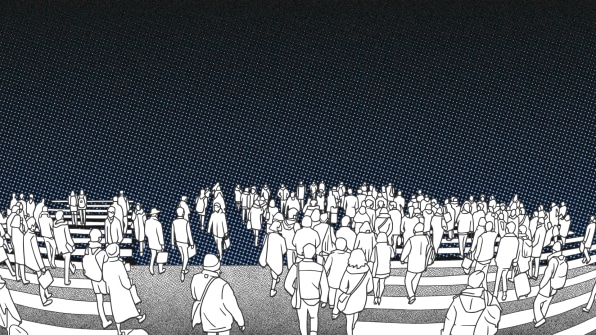
Improving social isolation and loneliness may significantly reduce the risk of mortality, a study suggests. Laura Du Ve//Refinery29 Australia – We Are Many Image Gallery/Getty Images
- A new study showed that improving social isolation and loneliness reduced the risk of all-cause mortality was reduced by 36% among participants with obesity, and 9% in those without obesity.
- Social isolation was the leading risk factor for mortality risk when compared with loneliness, depression, and anxiety.
- Experts agree that increased socialization may motivate people to engage in healthier behaviors.
- To help people stay connected, it can be helpful to participate in group activities and hobbies you enjoy, set aside time regularly to speak with friends and family, and volunteer in your community.
Growing evidence demonstrates that people with obesity experience higher levels of social isolation and loneliness compared to those who are not obese.
In a recent study, researchers analyzed the link between improvement of social isolation and loneliness with mortality risk among 398,972 UK Biobank participants with and without obesity.
Results showed that as social isolation and loneliness improved, the risk of all-cause mortality was reduced by 36% and 9%, among participants with obesity compared to those without obesity.
In determining lifestyle risk factors for mortality risk, social isolation was at the top of the list. Other risk factors included loneliness, depression, and anxiety. The findings were published January 22 in JAMA Network OpenTrusted Source.
“More recently, social isolation and loneliness has appropriately received attention from healthcare professionals and has been associated with adverse health outcomes,” said Dr. Lokesh Shahani, Ph.D., associate professor of psychiatry at UTHealth Houston, who was not involved in the study.
“This study was particularly interesting as it demonstrated that lower social isolation or loneliness was associated with a decreased risk of all-cause mortality among people with obesity, and improvement of social isolation and loneliness attenuated obesity-related excess risk of all-cause mortality.”
– Dr. Shahani
What’s the link between obesity and social isolation?
If an individual doesn’t have a strong support system, it can lead to an increase in unhealthy behaviors, including diet.
“Obesity, social isolation, and loneliness are all associated with many health issues,” Dr. Shahani explained.
“A lack of social support may exacerbate the health-risk behaviors of people with obesity including smoking, inactivity, and unhealthy diets and might also neglect health-protective behaviors, such as adherence to medical recommendations.”
He continued: “Moreover, those who live alone or lack social contacts may be at a heightened risk of death if they develop acute symptoms because they might not have a strong network of confidantes to urge them to seek medical attention. Addressing social isolation and loneliness in individuals with obesity may potentially help improve unhealthy lifestyles, provide better psychological support, and encourage people at high risk to seek medical assistance when necessary.”
Dr. Scott Krakower, psychiatrist, Zucker Hillside Hospital of Northwell Health agreed:
“With improved socialization, participants may be more motivated by peers to engage in healthier behaviors. They may seek out treatments and be more likely to follow up with medical care.”
Tips for people who feel socially isolated
There are numerous ways to foster connection with others.
“People who engage in meaningful, productive activities they enjoy with others feel a sense of purpose and tend to live longer,” said Dr. Shahani. “For example, helping others through volunteering helps you feel less lonely and allows you to have a sense of mission and purpose in life.”
He provided several other ideas to help people stay connected.
- Find an activity that you enjoy, restart an old hobby, or take a class to learn something new. You might have fun and meet people with similar interests.
- Schedule time each day to stay in touch with family, friends, and neighbors in person, by email, social media, voice call, or text. Talk with people you trust and share your feelings. Suggest an activity to help nurture and strengthen existing relationships. Sending letters or cards is another good way to keep up friendships.
- Use communication technologies such as video chat, smart speakers, or even companion robots to help keep you engaged and connected.
- Consider adopting a pet if you are able to care for them. Animals can be a source of comfort and may also lower stress and blood pressure.
- Find a faith-based organization where you can deepen your spirituality and engage with others in activities and events.
- Check out resources and programs at your local social service agencies, community and senior centers, and public libraries.
- Join a cause and get involved in your community.
To improve socialization, Dr. Krakower recommended, “Try to understand what is driving you to be isolated and any fears which may get in the way of functioning.”
One technique may be opposite action, such as doing the opposite of what you normally do to get a response. In this case, leaving the home, even though you feel uncomfortable, would be a possible suggestion, he explained.
“Another way to improve socialization is to look for activities that may engage you. This could include anything from games to sports; or volunteering. While it is good to have in-person activities, the internet has allowed us to have ways to interact without leaving the home. This may include joining meet-up groups or other interesting get-togethers that may sound appealing.”
– Dr. Krakower
Limitations of this study
“There were few limitations to the study, although as noted data appeared to come from basic questions,” Dr. Krakower explained. “In addition, the population captured may not have been that varied. Also, certain markers like duration of time associated with social isolation were absent.”
“The study has several limitations to consider,” said Dr. Shahani.
“First, no data of duration of loneliness or social isolation and stability can be obtained from the UK Biobank cohort,” Dr. Shahani explained. “Further, the social isolation and loneliness indexes were constructed from simple questions, which might not fully capture the complex social networking and interaction phenomenon.”












